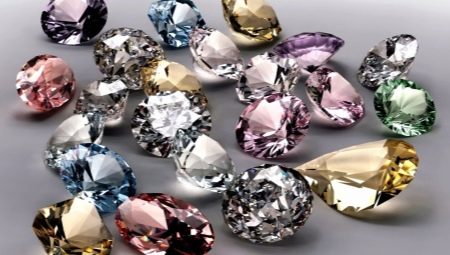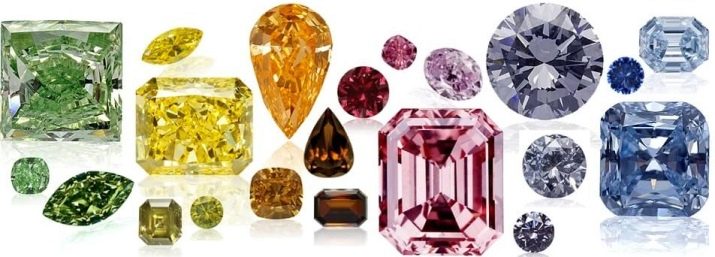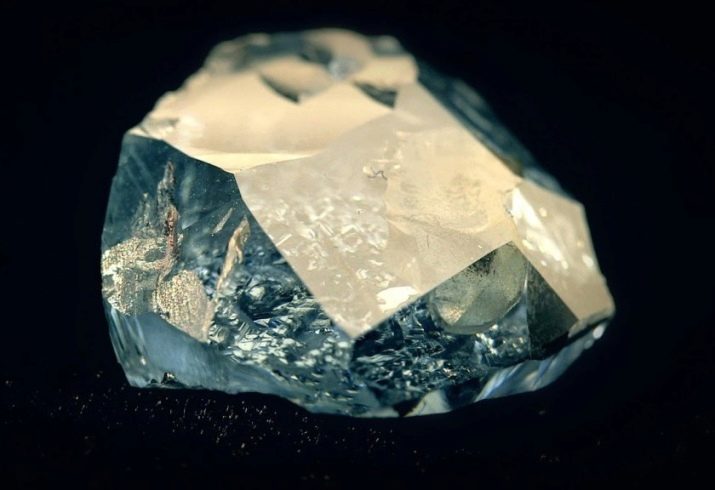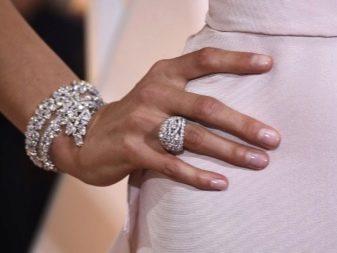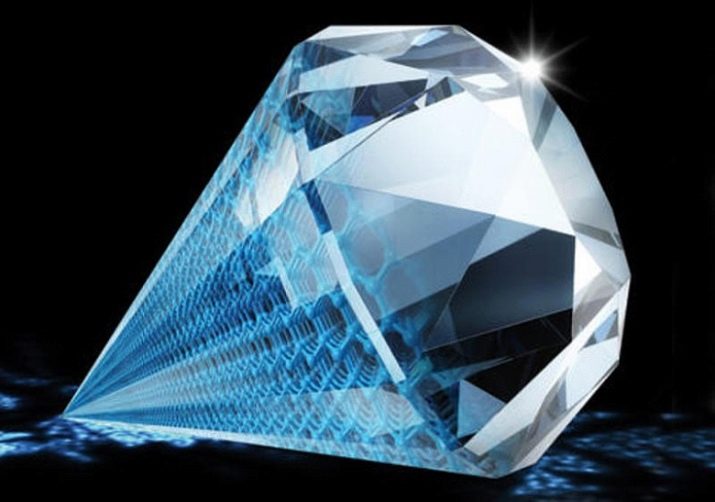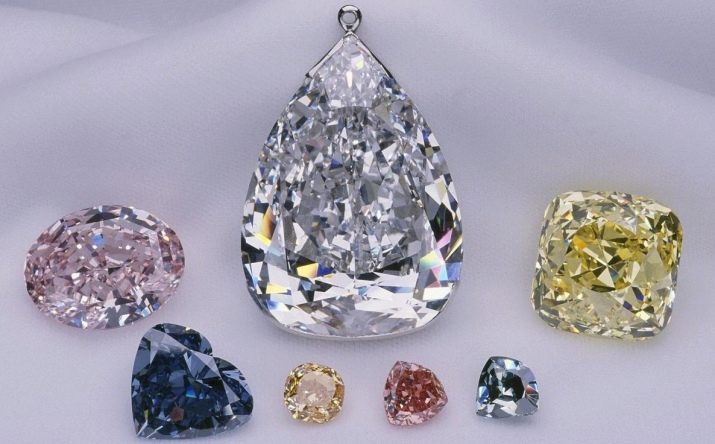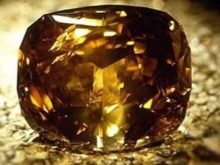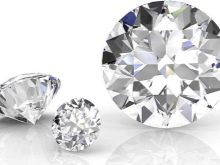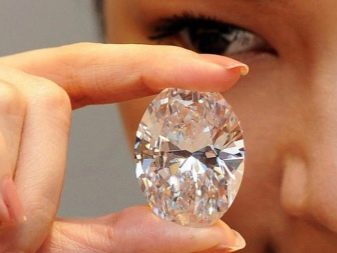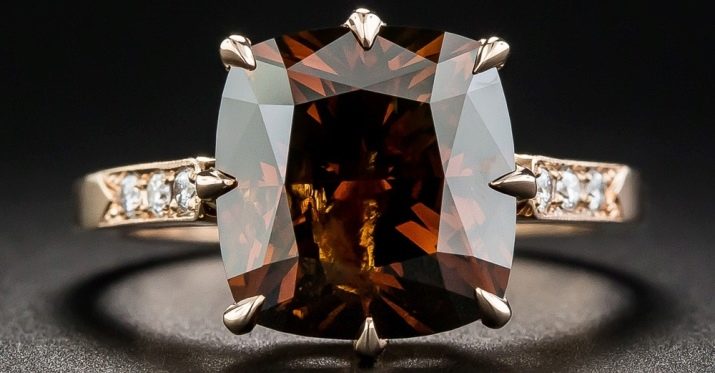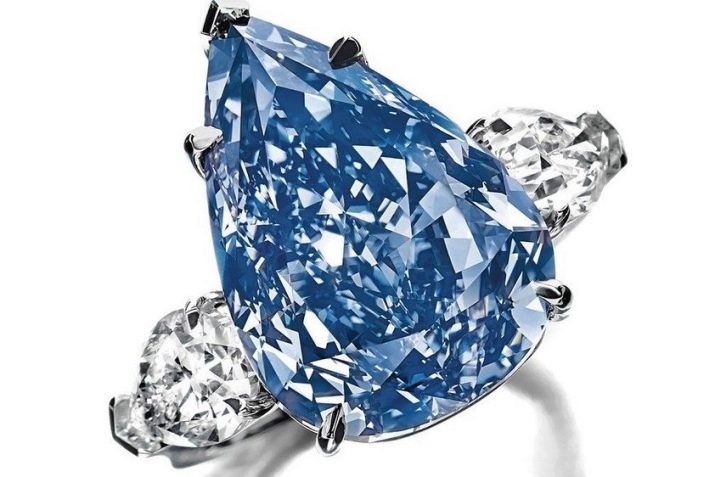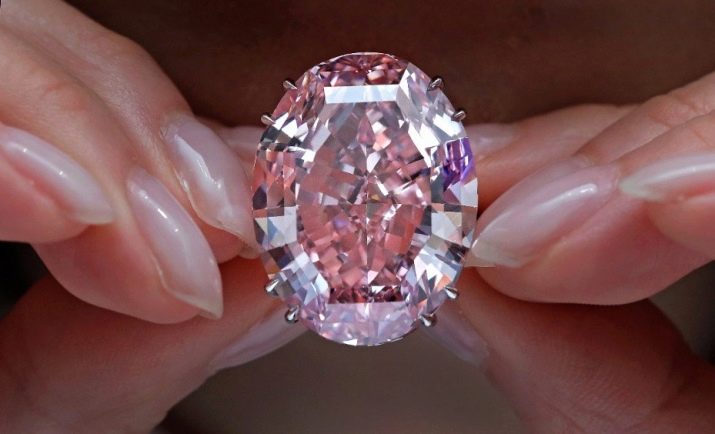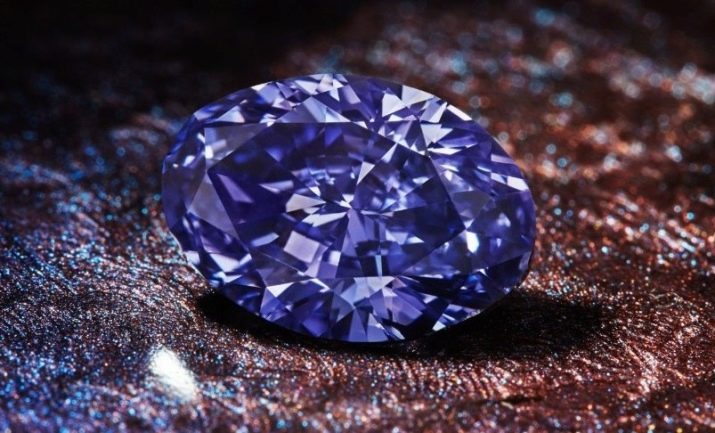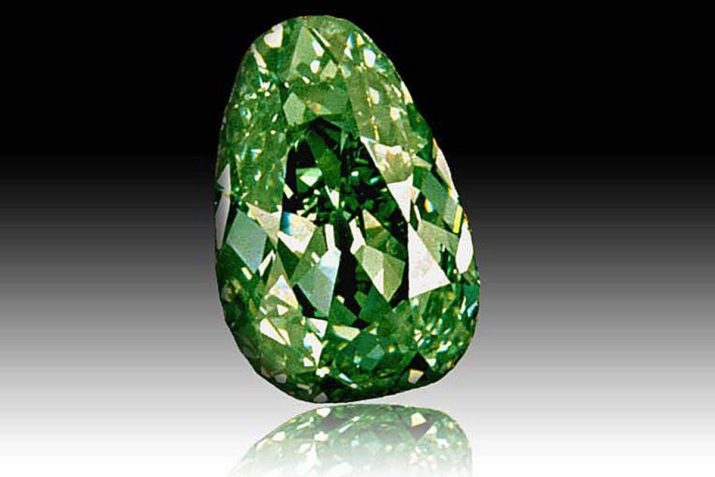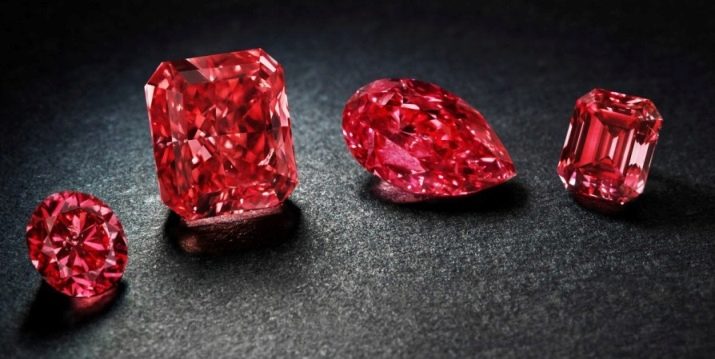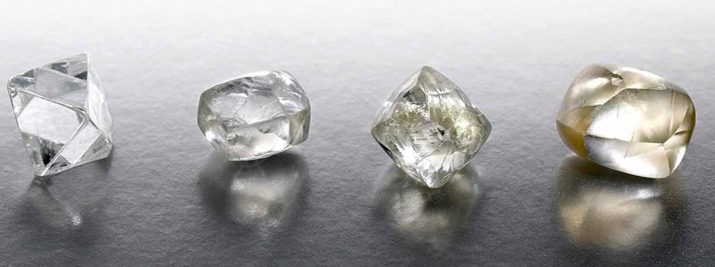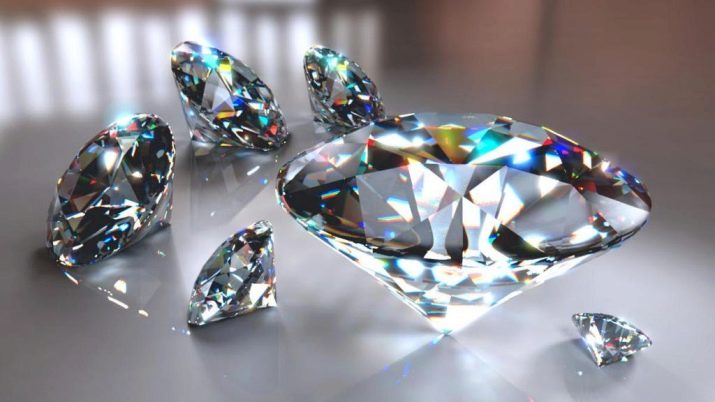“The best friends of the girls are diamonds”, I must admit that any woman will gladly accept a gift from these gems. Their beauty and brilliance fascinate, and often we can not distinguish a real diamond from a fake one. Most of us represent and know the diamond as a transparent gem, but in fact it can be of various colors and shades. You can find colored diamonds with very rare shades, such as green, yellow, orange, purple, red, blue, pink and even black.
Features
Before we talk about the features of the diamond and its various shades, it is necessary to define the concepts of “diamond” and “diamond”. The word “diamond” (adamas) is of Greek origin and means “unsurpassed” when translated into Russian. Diamond is a natural mineral composed of 99 percent carbon, and one percent may include other elements. It is the most durable mineral, besides one of the most expensive gems.
Diamonds on earth have been around for millions of years. According to one version, they were formed from a silicate melt of the cooled mantle of the earth. They were thrown to the surface by explosive processes inside the earth's crust. These stones can be found both among the mountains and at the bottom of rivers and seas.
Diamonds are used for jewelry as well as in practical applications, for example, in drilling (diamond equipment).
A diamond is a polished, washed and polished diamond. According to the established rules, diamonds may not be all diamonds, but only those that have fifty-seven faces after cutting. The weight of diamonds, like all precious stones, is determined in carats, 1 carat is equal to 200 milligrams.
To get a 1-carat diamond, on average, you need to mine and process about 200 tons of rock.
The value of this stone was first assessed in the 16th century, when its chemical and physical properties were studied. Then its strength and durability were revealed. Today, scientists have learned to create an artificial diamond, which by its strength is equal to the natural one. The resulting stone was called hyperelmaze, but it does not have such value as the original mineral.
There are many criteria for determining the value of precious stones. One of them is color. Before we talk about the color of the stone, let us explain how it is formed and what it depends on.
It is a mistake to assume that basically all stones are colorless and transparent.
Only a specialist can see the natural color of a diamond; it is extremely difficult for an ordinary person to understand and see the true shade of a stone. Minerals can be multi-colored: from light yellow to darkest black. Such colored stones are called fantasy. Due to the absence of an insignificant number of carbon atoms or, on the contrary, the presence of atypical for a stone atoms of boron, hydrogen, chromium and other elements, the mineral can be colored. To date, a million colorless diamonds can find only a hundred color in all.
Diamonds can be divided into three categories:
- basic (yellow and brown);
- rare (blue, black, red, green, etc.);
- transparent (white).
There are several modern technologies that can make the color more vivid and recognizable. To give the color a pronounced tone, the stone must be properly processed and have a good cut. When selling a stone, the fact of coloring must be specified among its characteristics:
- use of special coating;
- staining of stones by artificial means;
- electron or neutron irradiation.
Color diamonds are of two types: with a nitrogen content, more precisely, its atoms and those that do not contain nitrogen atoms.
Diamonds with nitrogen atoms
Basically, all diamonds have up to three nitrogen molecules, due to which the color is acquired, mostly light yellow stones.
Diamonds without atoms and nitrogen molecules
They are also called diamonds of pure water, in their structure there is no nitrogen at all. These are quite rare: only 2 percent of the total production. But there are more rare diamonds, which include atoms of boron and other chemical elements. Then their color changes and can be of almost any color.
Such stones are almost impossible to meet, they account for about 1/10 percent of the total diamond production.
Primary colors
Diamond, unlike other stones, for a long time practically does not change its natural color. It is not amenable to change, even with cooling, heating and solar radiation. The main colors are yellow and brown, they are much more often found in nature, so their cost is the lowest.
- Brown diamonds contain iron molecules. Stones can be from light brown, almost orange, to dark, saturated brown. Jewelry with them looks very original, but does not have a high value among the colored jewelry.
- Yellow diamonds are present in lithium. Here it should be noted that we are talking about a white diamond with a yellow tinge. It is difficult for an ordinary person to distinguish such a diamond from a truly yellow, more expensive one. The stone with a tinge of yellow is slightly more expensive than brown, but still belongs to the category of inexpensive diamonds.
Rare shades
Natural multi-colored stones are almost impossible to find in the open market. Mostly in jewelry, artificial colored diamonds or natural white stones that are artificially colored are used.
Blue diamond
Very rare and one of the most expensive among colored stones. Initially, the blue color of the diamond gives the presence of aluminum in its composition.
And as noted above, the richer the color, in this case blue, the more expensive the cost of the diamond.
Blue stones
Boron is a part of them, their price is much higher than blue ones. Natural blue stones can be found at most once a year. Their reserves account for 1/10 percent of all colored diamonds.
Pink stones
They are considered a variety of brown diamonds, but they are much more expensive and belong to more expensive colored stones. If brown tones are found in color, the cost of the mineral is reduced. In the composition there is manganese, which gives the stones a rich pink color.
Purple diamond
A mineral with this color is obtained due to the presence of hydrogen in its composition. In nature, there is almost no stone with a pure purple color. As a rule, in this color there are shades of pink, red or brown, a combination of several colors at the same time can be found in a lilac stone.
Purple diamond is found once in 25 million tons of ore. This stone was found in Australia, its value is more than five million dollars.
Green stones
Just like all colored diamonds, rarely occur in nature. If you come across a product with a green diamond, then most likely the color was obtained by artificial means.
A natural diamond of green color weighing 1 carat costs $ 250,000 or more.
The composition of the natural stone of green color includes chrome, as well as a green tint can be obtained under the influence of radioactive rays on it. The color may be uneven and combine several shades. Such stones are purchased, as a rule, for exhibitions or by wealthy people as financial investments.
Red diamond
We can say that it is the most unknown, rare and expensive. Until now, scientists can not figure out how this diamond is formed. The presence of manganese can give a maximum of pink shades. And like all mysterious, the origin of this mineral is shrouded in legends, according to one of which human blood is included in its composition.
The cost of 1 carat of such a diamond starts from 300,000 dollars and may increase several times. Only very wealthy people can afford to buy it.
Black brilliant
This is the most controversial stone, until recently it was not considered as an expensive colored diamond. It consists of graphite, which makes it so dark that the sun's rays do not pass through it and are not refracted. There is no opportunity to consider and evaluate its defects and purity.
Jewelry with these minerals look very mysterious and mysterious. Maybe that's why today demand, like the price of these stones, is gradually starting to increase.
Clear stones
The minerals of this rock can be both completely colorless and white in color with a yellowish or brown tint. The more transparent it is, the higher its cost.
Minerals with pronounced shades of yellow are considered the cheapest.
It is extremely rare to find a perfectly transparent stone in nature. The bulk of diamonds has a white color with a yellow tint, so their cost is much lower than color. However, among the white stones are the largest. Their weight can reach 180 carats.
If you do not have a special education or you are an unprofessional jeweler, it will be difficult for you to distinguish one shade from another, unless, of course, the color of the stone is not pronounced. This is primarily due to the fact that diamonds have more than fifty facets, and sunlight, falling on them, is refracted by all colors of the rainbow.
Interesting information about the largest and most beautiful diamonds can be found in the following video.
